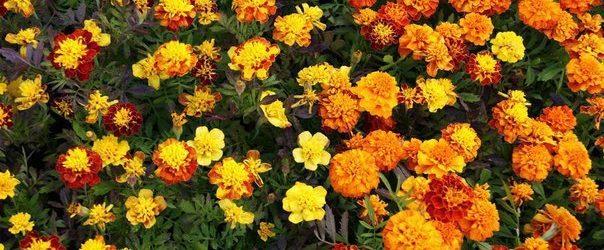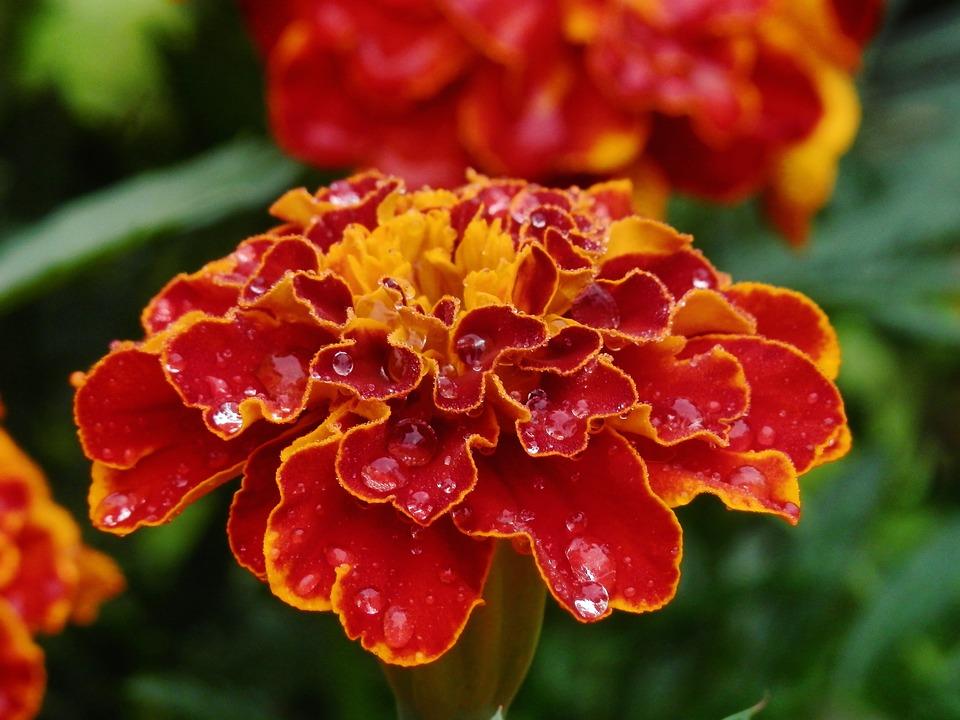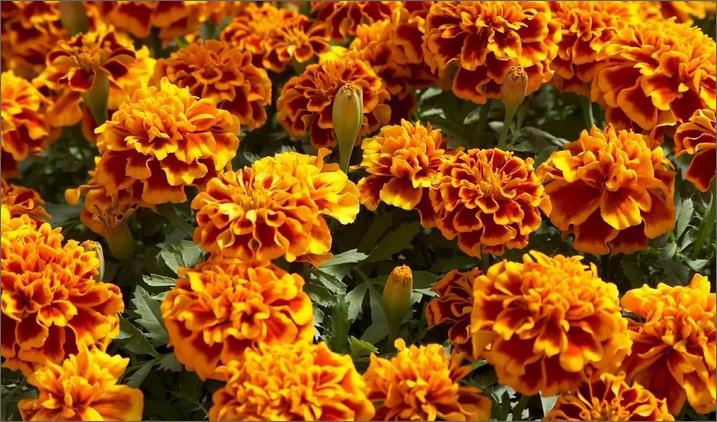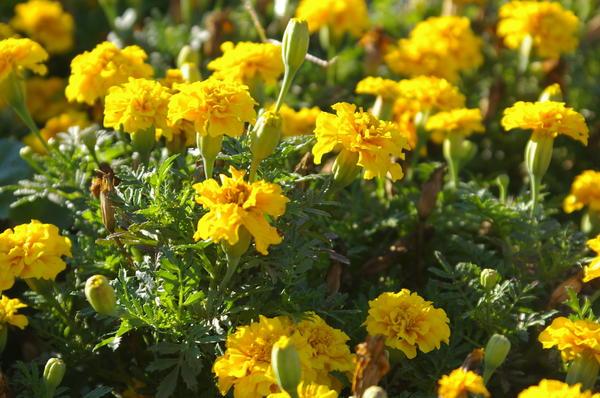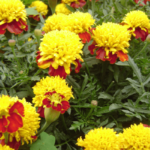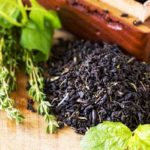The daily struggle for the harvest among gardeners includes various types of gardening work. Insect control is a global problem in the area. Even marigolds are used against pests, since insects cannot tolerate their strong smell. This is not difficult to do and anyone can do it.
Description of colors
The second name is Chernobrivtsy, which is the name given to plants in Ukraine. The stems of the flowers are straight, the height varies depending on the variety. The lowest is 0.2 m, the highest is 1.30 m. The flowers are different, their shade depends on the species.The color range varies from light yellow to dark brown.
The diameter of the inflorescences varies from 1 to 10 cm. It also depends on the variety. The flowers consist of wavy petals that form a ball shape. There are 50 varieties of the plant. They are not only decorative, but also useful.
Their benefits extend even to neighboring cultures, not just to people.
Marigold seeds remain viable for up to 4 years. The characteristics of plants include the property of self-seeding. Fallen planting material germinates the next year.
Why should marigolds be planted in the garden?
There are flowers that are useful only because they grow on the site. Marigolds fall into this category.
Why are they planted on the site:
- Thanks to its special smell, which pests cannot tolerate, the plant replaces fungicides and insecticides.
- Repelling rodents.
- Attracting pollinating insects.
- Reducing the amount of weeds, thanks to special enzymes, marigolds inhibit some weeds.
- Disinfection of soil from various viruses and diseases.
The following insects are particularly affected:
- aphids;
- scoop;
- nematodes;
- weevils;
- Colorado potato beetle;
- onion fly and many others.
Planting marigolds is simple; you don’t need to make any special efforts. Flowers are undemanding in care. Following standard agricultural techniques will help.
The effect of the plant on insect pests
In order to understand the reason for planting marigolds, it is necessary to understand the peculiarities of the effect on insects. Use as a repeller is to plant along the perimeter of the site or between beds with vegetable crops. When growing vegetables in a greenhouse, it is recommended to plant plants at the entrance, and if scale allows, then around all the beds. Planting Chernobrivtsev against aphids on cultivated plants and flowers in flower beds is used.
If you bury flowers on the site, they will fight pests that overwinter in the ground.
Nematodes cause significant damage to the root system. Summer residents advise planting marigolds nearby; their smell discourages the pest from coming close to the beds.
Folk remedies and recipes with flowers
Many methods using the whole plant and inflorescences help gardeners deal with common problems on the site. Often this method is the only possible one, since natural components are not deposited in the fruits and do not cause harm to the human body.
Liquid fertilizer
Its preparation does not take much effort and time, and the benefits of its use are visible after some time. Fertilizer is used not only for garden crops, but also indoor plants will be happy with this feeding. The beneficial properties of the fertilizer are noted by summer residents who used it on their plots. Plants grow significantly higher, flowering and ovary formation increase.
Preparation is not at all difficult; to create the fertilizer you need a large container, water and the plants themselves. The dishes are made of plastic, wood or ceramic. The metal oxidizes and harmful substances enter the solution.
Marigolds must be chopped manually. Then put the resulting raw materials into the prepared container and fill it with water. Place the fertilizer in a dark place and press down with a press. Wait until the color of the liquid changes and the foam disappears on the surface.The liquid is decanted, and the remaining raw materials are refilled.
Do not use concentrate under any circumstances. When feeding, dilute in a ratio of 1:9. Water at the roots or spray the plants. Gardeners themselves note the advantage of liquid fertilizer, since beneficial substances reach the root system directly or penetrate into the plants through the leaves.
The benefits of using a soil solution are noted by gardeners. They claim that the acidity of the soil decreases. This is especially important in areas where highly acidified soils are found.
Pest control solution
Marigolds are not used in their pure form. They are used with the following plants:
- nettle;
- alfalfa;
- tobacco;
- horseradish;
- sagebrush;
- mustard;
- tomatoes.
All herbs are mixed in equal quantities. The product will require 2 kg of mixture. Water is poured so that it covers the crushed plants. Infuse in a dark but warm room for 2 days. Strain, add water up to 10 liters, spray the bushes.
Mulching
Chopped plants are used for mulch. They are dug up along with the soil and left until winter. You can use all parts of marigolds for this: leaves, flowers, and stems. The impact on the soil will become noticeable within a year. Marigold mulch helps saturate the soil with nitrogen and other nutrients.
Humus
Parts of the plant are used to prepare humus at home. To do this, put the marigolds in a dark place in the garden and periodically water them with water. Within a few years, the plants completely rot, forming nutritious fertilizer for the site.
What crops cannot be planted with?
Marigolds bring not only benefits, but also harm. Plants should be planted on the site with caution. It is not advisable to grow flowers near the following crops:
- cabbage;
- radishes and radishes;
- peas and beans.
The harm to the plant is that marigolds inhibit the development of these crops.
The benefits of planting marigolds on a plot are noted by many summer residents. This is a folk remedy for fighting insects and diseases.

